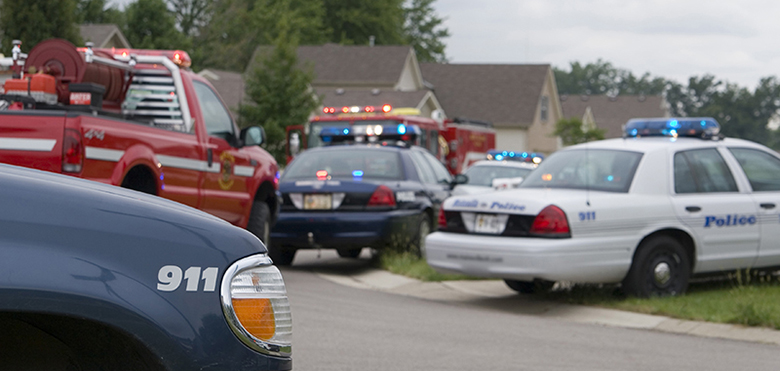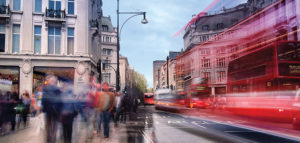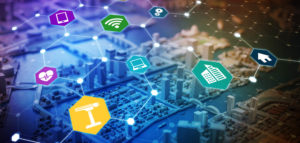How advancing technology is helping first responders
Only 51% of Americans would consider themselves comfortable living in a “smart city” according to a recent study, but “smart” is not a yes/no or an on/off absolute. “Smart” is an infinite spectrum. So of the remaining 49% of Americans uncomfortable living in a smart city, most would be surprised to learn that to some degree they likely already do.
Skepticism of the ways in which municipalities may leverage technology as burgeoning populations stress infrastructure, create new challenges relating to congestion and to public safety, and as community resilience is threatened by both natural and man-made factors, is natural. The reality is that many cities already have implemented new technologies and are expanding and improving them because they are having positive impacts on many aspects of everyday life. IoT devices such as cameras and audio solutions can perform a wide variety of functions. They are helping communities optimize traffic flow, detect environmental anomalies, and drive efficiencies in the emergency response workflow.
The role of AI enabled video in cities
The traditional – or common – benefit of a surveillance camera is a video stream that provides a real-time benefit of situational awareness and a post-event benefit of forensic detail. It is common knowledge that a surveillance camera is a useful security device, but historically the only value it offered was a video stream. Today’s most advanced cameras now have deep learning artificial intelligence built into them which essentially makes them smarter and able to perform more tasks than just streaming video of a location. With this intelligence built in, the camera generates metadata such as classification of objects and details about the environment within the camera’s field of view.
Because the number of cameras far surpasses the number of available human operators, this metadata can provide the benefit of driving the most important video to an operator’s viewing station. This is the concept of delivering the right data to the right person at the right time.
It also supports the post-event forensic review process after a notable event occurs by applying filters to search for specific labels embedded within the metadata instead of having to manually watch all the footage. This can significantly reduce the timeline of investigations.
Another great aspect of these highly intelligent cameras is how the metadata that they gather serve more purposes than just increasing safety. Local government stakeholders such as city/county managers, chief information officers, and public works directors can use this information to make data-driven decisions in relation to urban planning. With an accurate and sufficient dataset, stakeholders are equipped with a great overview of how people, products and vehicles navigate the community. Transportation data relating to streets, footfall on sidewalks, and more can be assessed and the analysis allows government administrators to improve existing cityscapes and come up with more efficient designs that support economic development and population growth.
The role played with first responders
Time is a critical factor when responding to emergencies. The primary branches of emergency response – police, fire, and ambulatory – all use technology to drive efficiencies in their workflow. This is true whether the emergency is an isolated event within a neighborhood, as well as for large gatherings such as cultural parades, political demonstrations, sports/entertainment events, or just the every-day hustle and bustle of a crowded city center.
Modern video and audio solutions can now play a critical part in keeping gatherings and city life safer. Cameras can be strategically placed to get a total view of an area and bring all footage to a central control center. This can be taken a step further when analytics are used to recognize aggressive behavior, gunshots, and other indicators of danger. The command center can then visually verify the alert. Furthermore, because they have visual verification, they can more effectively scale and prioritize the response, and continue to drive real-time information to the responders as they approach the scene. The overall goal is to not only achiever faster response, but to also use data in real time to make the response process safer for both the general public as well as for the responder. It was estimated that “as many as 10,000 lives could be saved every year by reducing 911 response times by just one minute,” according to The Wall Street Journal. Cameras with embedded deep learning AI resources and analytics are helping to achieve this goal.
The efficiencies achievable through the use of intelligent video solutions is not limited to metropolitan cities, a similar concept applies in rural and forest areas where intelligent video is used as a tool to limit the spread of wildfire by recognizing the threat soon after ignition, sending proper resources to the spot, and ultimately putting out the fire.
License plate recognition is another analytic that is becoming more popular. This can help locate cars that were reported stolen or that were reportedly involved in a violent crime. More sensor technologies like radar and LiDAR (light detection and ranging) can provide information in environments that may not be conducive to an optical camera, or where finite measurement of an objects size, shape, and distance are of high importance. “Sensor Fusion” is the term for combining the different sensors together to give more details and can give reviewers a more complete data representation.
Present day technology
Some of these technologies may seem futuristic, but the reality is that they already exist and are being implemented in many communities. They are improving livability of everyday life by helping first responders and other stakeholders get their job done better while improving overall public safety in the process.
Learn more about public safety solutions at Axis




